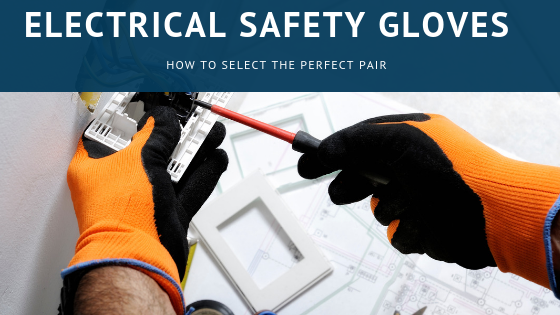
Selecting the Perfect Pair of Electrical Safety Gloves
Overview
Electrical Safety gloves are are important when handling electricity as protective gear is always a top priority. In order to be effective, electrical safety gloves must incorporate dielectric properties and physical strength. When selecting electrical gloves, you must check for qualities such as fit, durability, dexterity, & flexibility. As an electrician, you must also take into consideration if the gloves are anti-static or electrostatic dissipation. Electrical gloves must meet or exceed ASTM (American Society for Testing and Materials) requirements.
The electrical glove system consists of rubber insulating gloves, liner gloves, and leather protector gloves. Rubber insulating gloves are classified by the level of protection and voltage that they provide. Liner gloves reduce the discomfort of wearing rubber gloves and provide warmth while absorbing perspiration in the winter. Leather protector gloves are worn over rubber insulating gloves to provide protection against cuts, abrasions, and punctures.
Classification System
Electrical safety gloves are categorized by the level of voltage protection they provide and whether or not they’re resistant to ozone, according to the Occupation Safety and Health Administration (OSHA).
The classification system for electrical safety gloves is broken down into six classes. Each class of electrical protection equipment undergoes a series of tests to ensure maximum safety. Tests include AC/DC breakdowns, tensile strength, ozone resistance, and puncture resistance.
| Class of Equipment | Maximum Use Voltage (AC) | Proof Tested (VAC) |
Proof Tested (VDC) |
| 00 | 500 | 2,500 | 10,000 |
| 0 | 1,000 | 5,000 | 20,000 |
| 1 | 7,500 | 10,000 | 40,000 |
| 2 | 17,000 | 20,000 | 50,000 |
| 3 | 26,500 | 30,000 | 60,000 |
| 4 | 36,000 | 40,000 | 70,000 |
Additional Tips
Rubber is susceptible to the effects of the ozone, which causes cracking and compromises the integrity of the glove. If gloves are used in an environment where the levels of ozone are high due to pollution, ozone resistance becomes critical. Ozone resistance is broken down by type. A Type I glove is not ozone-resistant; Type II is ozone-resistant.
OSHA requires that electrical safety gloves be inspected for any damage before each use. You’re typically looking for damages such as holes, rips/tears, ozone or ultraviolet damage. Gloves must also be inspected immediately following any incident that may have caused damage to the gloves. OSHA requires that protective equipment be maintained in a safe, reliable condition.
The most common way to check your electrical gloves is the air test. The gloves are filled with air and then checked for leaking. Air escaping the glove means there is a hole or a tear in the gloves. If there is a hole or tear, the gloves are considered unusable.
Electrical Safety Gloves need to be stored properly when not in use to ensure their integrity and safety. Typically, proper storage consists of not folding the gloves. Keep the gloves out of excessive heat, sunlight, humidity and anything that could damage the rubber of the gloves.
We can all agree on the fact that protective gloves are necessity in this industry. No one wants to be that unlucky person that touches an electric current with their bare hands. In order to avoid a deadly encounter, make sure you’re following the proper protocol to select the perfect pair of gloves for your next electrical job or project.

 CALL OR TEXT NOW 800-597-9311
CALL OR TEXT NOW 800-597-9311
Leave a comment